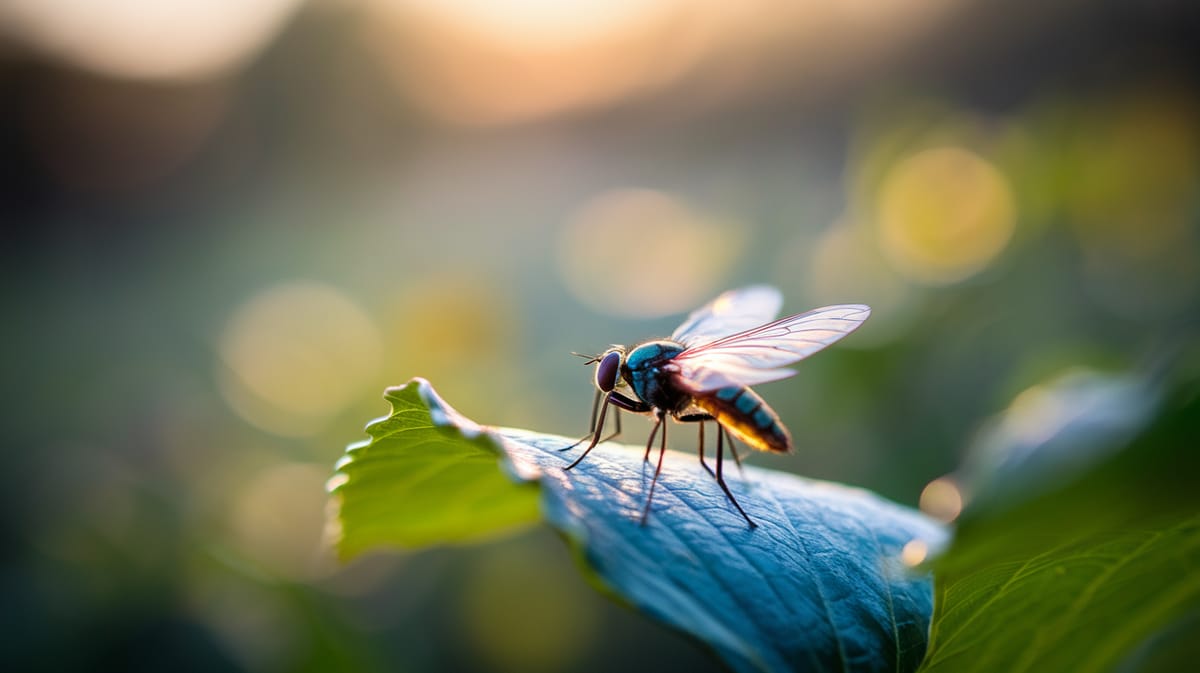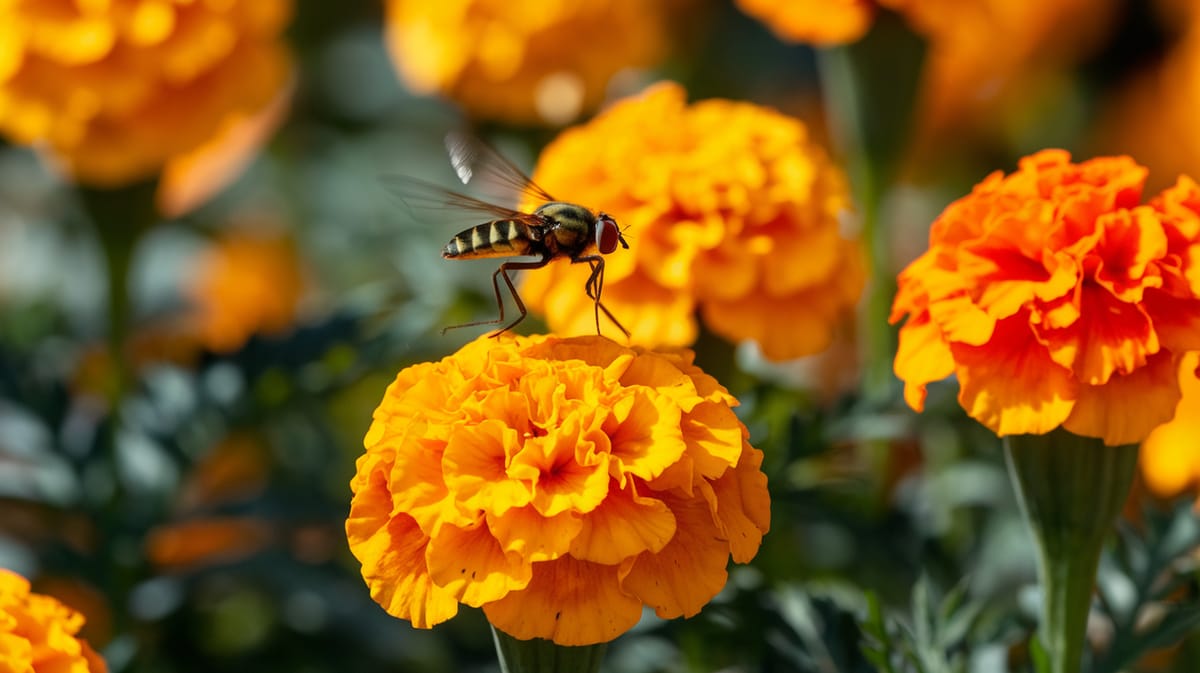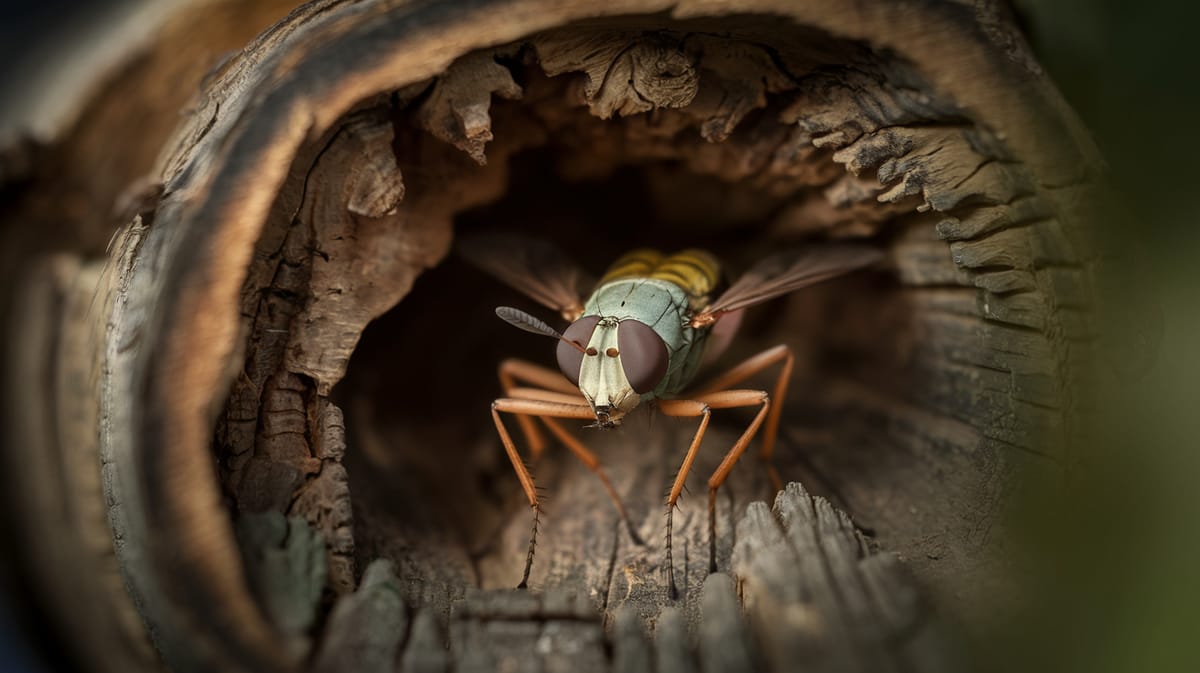Drone Fly
Champion of mimicry with its bee-like appearance, the Drone Fly plays a vital ecological role by pollinating flowers and recycling nutrients through its larval stages.

Key Insights at a Glance
Did You Know?
Taxonomy & Classification
Drone flies mimic bees, aiding in pollination with their hover and flight skills, showcasing fascinating evolutionary mimicry and ecological roles. Let's understand the evolutionary journey and classification of these remarkable pollinators.
Global Presence
Eristalis genus includes around 99 species, widely distributed across Europe, Asia, and North America, thriving in diverse habitats.
Evolutionary Adaptations
Drone flies evolved mimicry traits resembling bees, enhancing their survival and pollination capabilities over millions of years.
Lifecycle and Growth
A remarkable journey of transformation from Egg to Adult.
Egg
Laid on decaying organic material, eggs are small and white, hatching into larvae within a few days.
Larva
Known as rat-tailed maggots, larvae feed on bacteria, using a long siphon for breathing while submerged in liquid.
Pupa
Pupation occurs in a dry place, transforming the larva into an adult fly with wings and distinct markings.
Adult
Resembling bees, adult drone flies pollinate flowers and reproduce, completing their life cycle.
Dietary Habits
An efficient pollinator with unique feeding strategies, this insect’s diet centers on nectar, pollen, and occasionally other food sources.
| DIET TYPE | DESCRIPTION |
|---|---|
| Primary Diet | Primarily consumes nectar and pollen from various flowering plants, aiding in pollination processes. |
| Secondary Diet | Occasionally feeds on honeydew secreted by aphids or other plant-sap-sucking insects, supplementing its diet. |
| Occasional | Rarely ingests decaying organic matter or decomposing plant material, demonstrating opportunistic feeding behaviors. |

Behaviour and Adaptations
Discover the fascinating traits that make the Drone Fly an impressive mimic and survivor.
Hovering Precision
Drone Flies hover expertly, resembling bees, to evade predators.
Pollination Aid
They efficiently pollinate various plants while feeding on nectar.
Aquatic Larvae Adaptation
Larvae thrive in stagnant water, using a breathing tube for oxygen.
Ecosystem Impact
Drone Flies play a crucial role in sustaining ecological harmony through pollination, nutrient recycling, and serving as a food source.
Efficient Pollinator
Drone Flies enhance plant reproduction by transferring pollen between flowers.
Nutrient Recycler
Larvae aid in decomposing organic waste, enriching soil health.
Food Web Component
Serves as a vital prey species for birds and amphibians.
Conservation Challenges
Addressing the major threats to Drone Fly populations and their ecosystems.
Chemical Exposure
Pesticides harm Drone Fly larvae and reduce adult populations.
Habitat Loss
Urban development reduces natural habitats and food sources for Drone Flies.
Climate Change
Temperature changes alter Drone Fly habitats and food availability.
Frequently Asked Questions
How long do Drone Fly live?
Drone Flies typically live for around two to three weeks as adults. Their entire lifecycle, including egg, larva, pupa, and adult stages, spans about four to five weeks, depending on environmental conditions like temperature and food availability.
What do Drone Fly eat?
As larvae, Drone Flies feed on organic matter in water, often in stagnant puddles or ponds. Adult Drone Flies primarily feed on nectar and pollen from flowers, contributing to pollination in gardens and natural habitats.
Are Drone Fly poisonous?
Drone Flies are not poisonous. They are harmless to humans and animals. These insects are often mistaken for bees due to their appearance, but they do not have stingers or venom.
Are Drone Fly endangered?
Drone Flies are not considered endangered. They are widespread and commonly found in many regions, thriving in various habitats where there is access to water and flowering plants.
What do Drone Fly symbolize?
Drone Flies are often associated with pollination and the cycle of life. They can symbolize transformation and renewal due to their lifecycle, which includes dramatic changes from larva to adult.
Do Drone Fly bite?
Drone Flies do not bite. They are often mistaken for bees or wasps but lack the capability to sting or bite as they do not have stingers or mouthparts designed for biting.
What color are Drone Fly?
Drone Flies typically have a dark, bee-like appearance with black and yellow markings. Their bodies may have a metallic sheen, and they possess large, clear wings.
Does a Drone Fly have wings?
Yes, Drone Flies have wings. As members of the fly family, they possess two transparent wings that are crucial for their ability to hover and fly swiftly.
What does a Drone Fly look like?
Drone Flies resemble honeybees with their black and yellow striped bodies. They have large, compound eyes and clear wings. Despite their bee-like appearance, close inspection reveals their typical fly characteristics, like a single pair of wings.
Is a Drone Fly an insect?
Yes, the Drone Fly is an insect. It belongs to the family Syrphidae and is a type of hoverfly. Like other insects, it has a segmented body with a head, thorax, abdomen, and six legs.
Related Insects
Discover insects with similar characteristics to Drone Fly - including shared habitats, diets, and taxonomic classifications
Share this profile
Help others discover Drone Fly
